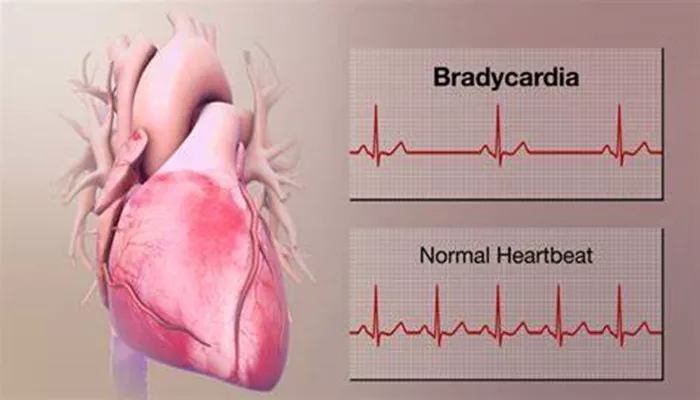Tachycardia is a condition characterized by an elevated heart rate, typically defined as exceeding 100 beats per minute when at rest. While tachycardia can arise from various physiological and pathological factors, one area of interest is the potential link between physical decline and the onset of tachycardia. This article will explore how physical decline can contribute to the development of tachycardia, the underlying mechanisms involved, and the implications for patient care.
What Is Tachycardia?
Tachycardia is not a disease in itself but a symptom that can indicate various underlying health issues. It can be classified into several types, including sinus tachycardia, atrial tachycardia, and ventricular tachycardia. Each type has different causes and implications.
Sinus Tachycardia: This is a normal response to stimuli such as exercise, stress, or fever. It is characterized by an increased heart rate originating from the sinus node, the heart’s natural pacemaker.
Atrial Tachycardia: This type occurs when the heart’s upper chambers (atria) beat too quickly due to abnormal electrical signals.
Ventricular Tachycardia: This condition arises from the heart’s lower chambers (ventricles) and can be life-threatening, especially if it leads to ventricular fibrillation.
The Relationship Between Physical Decline And Tachycardia
Physical decline refers to a reduction in physical capabilities, which can occur due to aging, illness, or prolonged inactivity.
This decline can lead to various physiological changes that may trigger tachycardia.
Here are several ways in which physical decline can contribute to the development of tachycardia:
1. Decreased Cardiovascular Fitness
As individuals age or become less active, their cardiovascular fitness often declines. This reduction means the heart must work harder to pump blood efficiently. When the heart is unable to meet the body’s demands, it may respond by increasing the heart rate, resulting in tachycardia.
Mechanism: The body compensates for decreased fitness by increasing heart rate to maintain adequate cardiac output.
This is particularly evident during physical exertion, where a fit individual may maintain a lower heart rate compared to someone who is physically deconditioned.
SEE ALSO: Can Too Much Serotonin Cause Heart Problems?
2. Autonomic Nervous System Imbalance
Physical decline can lead to changes in the autonomic nervous system, which regulates heart rate and blood pressure. An imbalance between the sympathetic and parasympathetic nervous systems can result in increased heart rate.
Sympathetic Activation: In a state of physical decline, there may be heightened sympathetic nervous system activity. This can lead to an increased heart rate and blood pressure, contributing to the development of tachycardia.
Parasympathetic Withdrawal: Conversely, a decrease in parasympathetic tone can also lead to a higher resting heart rate.
This imbalance is often seen in older adults or those with chronic illnesses.
3. Dehydration and Electrolyte Imbalance
Physical decline often leads to decreased mobility and, consequently, reduced fluid intake. Dehydration can result in electrolyte imbalances, which are critical for maintaining normal heart rhythm.
Electrolytes: Key electrolytes such as potassium, sodium, and calcium play essential roles in cardiac function. An imbalance can disrupt the electrical signals in the heart, leading to tachycardia.
Symptoms of Dehydration: Symptoms such as dizziness, fatigue, and palpitations may arise from dehydration, further complicating the clinical picture.
4. Comorbidities and Medication Effects
Individuals experiencing physical decline often have comorbid conditions such as hypertension, diabetes, or heart disease.
These conditions can contribute to the development of tachycardia.
Medication Side Effects: Many medications prescribed for chronic conditions can have side effects that include increased heart rate. For example, diuretics can lead to electrolyte imbalances, while beta-agonists used for respiratory conditions can stimulate the heart.
Heart Disease: Underlying heart conditions, such as heart failure or coronary artery disease, can also lead to tachycardia as the heart struggles to maintain adequate blood flow.
Clinical Implications of Tachycardia Due to Physical Decline
Recognizing the link between physical decline and tachycardia is essential for effective patient management. Here are several clinical implications to consider:
1. Comprehensive Assessment
Healthcare providers should conduct a thorough assessment of patients with tachycardia, particularly those with a history of physical decline. This assessment should include:
Medical History: A detailed medical history can help identify potential causes of tachycardia, including medications and underlying health conditions.
Physical Examination: A comprehensive physical examination can reveal signs of dehydration, electrolyte imbalances, and cardiovascular fitness.
Diagnostic Testing: Tests such as electrocardiograms (ECGs), echocardiograms, and blood tests may be necessary to evaluate heart function and identify underlying issues.
2. Tailored Treatment Plans
Treatment for tachycardia should be individualized based on the underlying causes. For patients experiencing tachycardia due to physical decline, the following strategies may be beneficial:
Lifestyle Modifications: Encouraging regular physical activity can improve cardiovascular fitness and reduce the incidence of tachycardia. A gradual increase in activity levels is essential, especially for those who have been sedentary.
Hydration and Nutrition: Ensuring adequate hydration and a balanced diet rich in electrolytes can help prevent dehydration and maintain normal heart function.
Medication Review: Regularly reviewing medications with a healthcare provider can help identify any that may contribute to tachycardia.
Adjustments may be necessary to optimize treatment.
Conclusion
Physical decline can indeed contribute to the development of tachycardia through various mechanisms, including decreased cardiovascular fitness, autonomic nervous system imbalances, dehydration, and comorbidities. Understanding this relationship is essential for healthcare providers to effectively manage patients with tachycardia.
By conducting comprehensive assessments, tailoring treatment plans, and providing education and support, healthcare providers can help patients mitigate the effects of physical decline and reduce the incidence of tachycardia. As the population ages, recognizing and addressing these issues will become increasingly important in promoting cardiovascular health and overall well-being.


